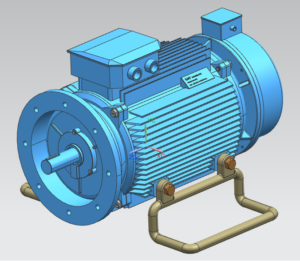You can have brilliant ideas, but if you can’t get them across, your ideas won’t get you anywhere- Lee Iacocca
In a world strewn with air-conditioners, kitchen appliances, medical equipment mobile phones, cameras, hybrid cars and other paraphernalia, mechanical parts with Printed circuit boards (PCBs) form a major part of the consumer market. Given this, traditional methods of designing electromechanical parts would often fail to ascend the aggressive demand curve. Electromechanical parts are always considered to be pesky components which are often approached with much trepidation.

For the longest time sequential methodology was an industrial standard of designing an electromechanical part. In this, the mechanical engineer would first conceive the mechanical design which then gets passed on to the electrical engineer then to be administered by the software engineer. With plethora of data, information and communication being bandied about, the electromechanical component would usually undergo numerous prolonged design cycles before hitting the homerun.
Realizing this very fact, this relay race of designing mechanical components with PCBs was introspected by industrial competitors in the recent past.
Much-needed attention
With its many flaws, essentially addressing the following would have resulted in a plot twist-
- Bridging the communication gap between MCAD and ECAD engineers.
- Nipping faulty software codes in the bud.
- Configuration management.
- Filing and organizing configuration for each design stream.
Having addressed these issues, an electromechanical part would have experienced speedy-time-to-market, shorter design cycles, efficient processes across streams involved in designing an electromechanical component, effective cost and the like.
Modern day Concurrence
The prospects of such benefits with the promises of customized solutions then drove firms to adopt concurrent methodology of designing and producing electromechanical component. Simultaneous engineering has a clear view of customer requirements, financial estimates, practical challenges and real life operational domain.
With cross-functional activities carried out by a team, information exchange is meteoric, thereby reducing time and cost of manufacturing an electromechanical part.
Concurrent enough?
While the benefits of this process are many, the benefits of this quadruples in the right software environment. Altering design of a virtual prototype immediately (or, simultaneously) on being informed of a major mechanical part design change. Likewise, being able to alter a mechanical part right at the phase of design on being warned of thermal concerns (the part would face in the end) is another one of many benefits a manufacturability software would help one reap.
A software which takes both mechanical and electrical requirements of a part is a major plus. Such a software would make interpretation of data easy at all levels, eliminating prolonged hours, re-work at each level and unstructured data which makes optimization difficult.
Conquering all odds
Most software draw a hazy line between PCB input and mechanical input, thereby dallying the production cycle. If not this, then the design software purveyor throws the analyzing software into a tizzy. Industrial leaders have benefited by implementing systems which are not biased to interface in which mechanical (or, electrical) part is designed. Be it PTC, Dassault, Siemens or the like the ability to alter design right within the designing environment and then being able to switch to the manufacturability software is a must feature for designing that electro-mechanical part right.
Setting up such an ideal product life-cycle management (PLM) software is all it would take to expel the gap between mechanical and electrical designs. Often referred to as “throwing designs over the wall”, the right software would bash these walls.
Knowing each component right
In this pursuit, one would encounter complex questions such as- what’s the best, what spells economical, which one has an eye for detail, which one perceives it all……as smart design calls for smart software. DFMPro suite of products prides itself in comprehending the design intent of both the parties, thereby, identifying issues much in advance, right at the stage of design!
Understanding the eminence of assembly in an electromechanical part, it checks ones unique design for clearance, interference, alignment, preferred components, et al. Being able to envision the manufacturability of a part and proposing a design alternate often results in optimization…at all stages!
Are you exchanging and implementing your brilliant ideas right in your electromechanical part?